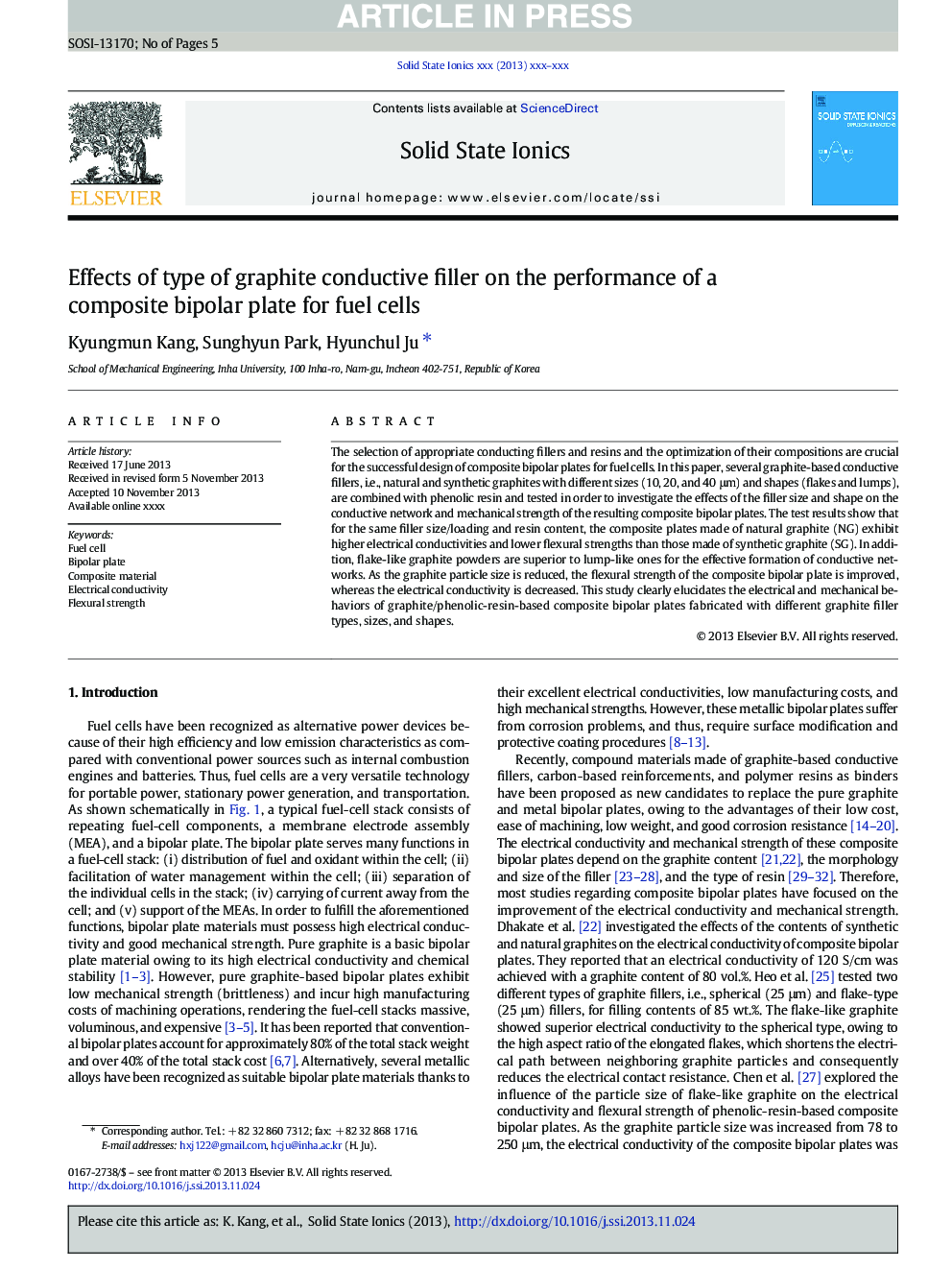| Article ID | Journal | Published Year | Pages | File Type |
|---|---|---|---|---|
| 7746297 | Solid State Ionics | 2014 | 5 Pages |
Abstract
The selection of appropriate conducting fillers and resins and the optimization of their compositions are crucial for the successful design of composite bipolar plates for fuel cells. In this paper, several graphite-based conductive fillers, i.e., natural and synthetic graphites with different sizes (10, 20, and 40 μm) and shapes (flakes and lumps), are combined with phenolic resin and tested in order to investigate the effects of the filler size and shape on the conductive network and mechanical strength of the resulting composite bipolar plates. The test results show that for the same filler size/loading and resin content, the composite plates made of natural graphite (NG) exhibit higher electrical conductivities and lower flexural strengths than those made of synthetic graphite (SG). In addition, flake-like graphite powders are superior to lump-like ones for the effective formation of conductive networks. As the graphite particle size is reduced, the flexural strength of the composite bipolar plate is improved, whereas the electrical conductivity is decreased. This study clearly elucidates the electrical and mechanical behaviors of graphite/phenolic-resin-based composite bipolar plates fabricated with different graphite filler types, sizes, and shapes.
Related Topics
Physical Sciences and Engineering
Chemistry
Electrochemistry
Authors
Kyungmun Kang, Sunghyun Park, Hyunchul Ju,
